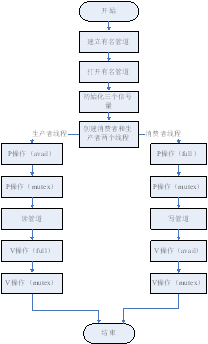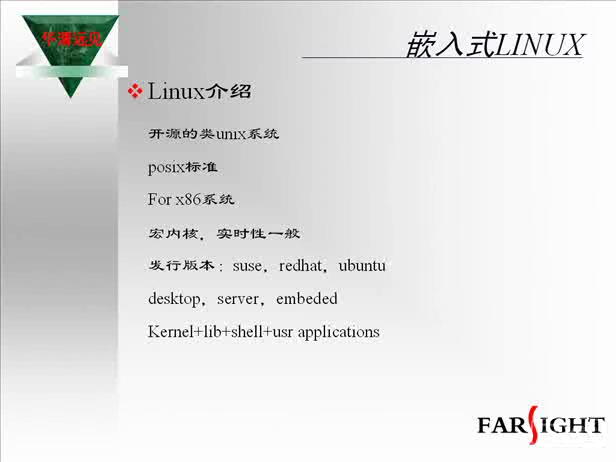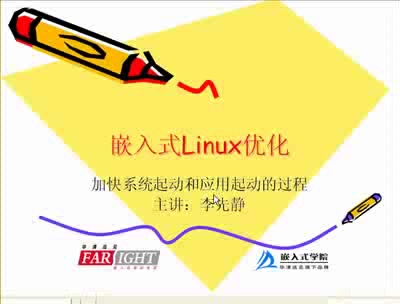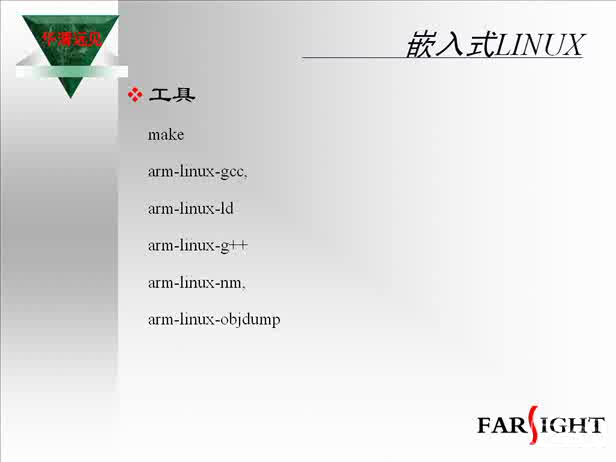多線程編程之:實驗內(nèi)容——“生產(chǎn)者消費者”實驗
9.3 實驗內(nèi)容——“生產(chǎn)者消費者”實驗
本文引用地址:http://www.104case.com/article/264054.htm1.實驗目的
“生產(chǎn)者消費者”問題是一個著名的同時性編程問題的集合。通過學習經(jīng)典的“生產(chǎn)者消費者”問題的實驗,讀者可以進一步熟悉Linux中的多線程編程,并且掌握用信號量處理線程間的同步和互斥問題。
2.實驗內(nèi)容
“生產(chǎn)者—消費者”問題描述如下。
有一個有限緩沖區(qū)和兩個線程:生產(chǎn)者和消費者。他們分別不停地把產(chǎn)品放入緩沖區(qū)和從緩沖區(qū)中拿走產(chǎn)品。一個生產(chǎn)者在緩沖區(qū)滿的時候必須等待,一個消費者在緩沖區(qū)空的時候也必須等待。另外,因為緩沖區(qū)是臨界資源,所以生產(chǎn)者和消費者之間必須互斥執(zhí)行。它們之間的關系如圖9.4所示。
圖9.4 生產(chǎn)者消費者問題描述
這里要求使用有名管道來模擬有限緩沖區(qū),并且使用信號量來解決“生產(chǎn)者—消費者”問題中的同步和互斥問題。
3.實驗步驟
(1)信號量的考慮。
這里使用3個信號量,其中兩個信號量avail和full分別用于解決生產(chǎn)者和消費者線程之間的同步問題,mutex是用于這兩個線程之間的互斥問題。其中avail表示有界緩沖區(qū)中的空單元數(shù),初始值為N;full表示有界緩沖區(qū)中非空單元數(shù),初始值為0;mutex是互斥信號量,初始值為1。
(2)畫出流程圖。
本實驗流程圖如圖9.5所示。

圖9.5 “生產(chǎn)者—消費者”實驗流程圖
(3)編寫代碼
本實驗的代碼中采用的有界緩沖區(qū)擁有3個單元,每個單元為5個字節(jié)。為了盡量體現(xiàn)每個信號量的意義,在程序中生產(chǎn)過程和消費過程是隨機(采取0~5s的隨機時間間隔)進行的,而且生產(chǎn)者的速度比消費者的速度平均快兩倍左右(這種關系可以相反)。生產(chǎn)者一次生產(chǎn)一個單元的產(chǎn)品(放入“hello”字符串),消費者一次消費一個單元的產(chǎn)品。
/*producer-customer.c*/
#include
#include
#include
#include
#include
#include
#include
#include
#define MYFIFO "myfifo" /* 緩沖區(qū)有名管道的名字 */
#define BUFFER_SIZE 3 /* 緩沖區(qū)的單元數(shù) */
#define UNIT_SIZE 5 /* 每個單元的大小 */
#define RUN_TIME 30 /* 運行時間 */
#define DELAY_TIME_LEVELS 5.0 /* 周期的最大值 */
int fd;
time_t end_time;
sem_t mutex, full, avail; /* 3個信號量 */
/*生產(chǎn)者線程*/
void *producer(void *arg)
{
int real_write;
int delay_time = 0;
while(time(NULL) < end_time)
{
delay_time = (int)(rand() * DELAY_TIME_LEVELS/(RAND_MAX) / 2.0) + 1;
sleep(delay_time);
/*P操作信號量avail和mutex*/
sem_wait(&avail);
sem_wait(&mutex);
printf("nProducer: delay = %dn", delay_time);
/*生產(chǎn)者寫入數(shù)據(jù)*/
if ((real_write = write(fd, "hello", UNIT_SIZE)) == -1)
{
if(errno == EAGAIN)
{
printf("The FIFO has not been read yet.Please try latern");
}
}
else
{
printf("Write %d to the FIFOn", real_write);
}
/*V操作信號量full和mutex*/
sem_post(&full);
sem_post(&mutex);
}
pthread_exit(NULL);
}
/* 消費者線程*/
void *customer(void *arg)
{
unsigned char read_buffer[UNIT_SIZE];
int real_read;
int delay_time;
while(time(NULL) < end_time)
{
delay_time = (int)(rand() * DELAY_TIME_LEVELS/(RAND_MAX)) + 1;
sleep(delay_time);
/*P操作信號量full和mutex*/
sem_wait(&full);
sem_wait(&mutex);
memset(read_buffer, 0, UNIT_SIZE);
printf("nCustomer: delay = %dn", delay_time);
if ((real_read = read(fd, read_buffer, UNIT_SIZE)) == -1)
{
if (errno == EAGAIN)
{
printf("No data yetn");
}
}
printf("Read %s from FIFOn", read_buffer);
/*V操作信號量avail和mutex*/
sem_post(&avail);
sem_post(&mutex);
}
pthread_exit(NULL);
}
int main()
{
pthread_t thrd_prd_id,thrd_cst_id;
pthread_t mon_th_id;
int ret;
srand(time(NULL));
end_time = time(NULL) + RUN_TIME;
/*創(chuàng)建有名管道*/
if((mkfifo(MYFIFO, O_CREAT|O_EXCL) < 0) && (errno != EEXIST))
{
printf("Cannot create fifon");
return errno;
}
/*打開管道*/
fd = open(MYFIFO, O_RDWR);
if (fd == -1)
{
printf("Open fifo errorn");
return fd;
}
/*初始化互斥信號量為1*/
ret = sem_init(&mutex, 0, 1);
/*初始化avail信號量為N*/
ret += sem_init(&avail, 0, BUFFER_SIZE);
/*初始化full信號量為0*/
ret += sem_init(&full, 0, 0);
if (ret != 0)
{
printf("Any semaphore initialization failedn");
return ret;
}
/*創(chuàng)建兩個線程*/
ret = pthread_create(&thrd_prd_id, NULL, producer, NULL);
if (ret != 0)
{
printf("Create producer thread errorn");
return ret;
}
ret = pthread_create(&thrd_cst_id, NULL, customer, NULL);
if(ret != 0)
{
printf("Create customer thread errorn");
return ret;
}
pthread_join(thrd_prd_id, NULL);
pthread_join(thrd_cst_id, NULL);
close(fd);
unlink(MYFIFO);
return 0;
}
4.實驗結果
運行該程序,得到如下結果:
$ ./producer_customer
……
Producer: delay = 3
Write 5 to the FIFO
Customer: delay = 3
Read hello from FIFO
Producer: delay = 1
Write 5 to the FIFO
Producer: delay = 2
Write 5 to the FIFO
Customer: delay = 4
Read hello from FIFO
Customer: delay = 1
Read hello from FIFO
Producer: delay = 2
Write 5 to the FIFO
……
linux操作系統(tǒng)文章專題:linux操作系統(tǒng)詳解(linux不再難懂)
linux操作系統(tǒng)文章專題:linux操作系統(tǒng)詳解(linux不再難懂)linux相關文章:linux教程













評論